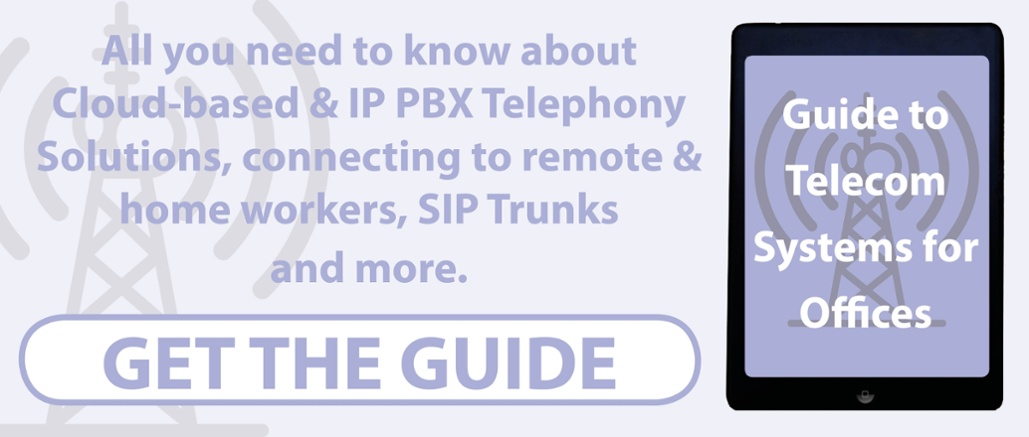
Understanding what a VOIP line can do for your business means being able to make an informed decision over your future communication needs, whether or not you opt for one.
VOIP is a technology which has been marketed to business since the 1990s and yet few small and medium enterprise owners know what it is exactly. Simply put, VOIP is a means of carrying voice communications over a connection that uses internet protocol (IP) data communication standards. Therefore, it simply stands for Voice Over IP.
Your technical manager or network administrators may need to know how this technology works with an existing data communications set up. For finance directors, managing directors and head of sales departments, the proper question to ask is what can it do and how can it benefit the business? Many SMEs are asking similar questions across Buckinghamshire, Oxfordshire and Berkshire these days. Why is VOIP technology no longer the preserve of big businesses in London and other commercial centres around the globe?
The Importance of SIP Trunks
Although VOIP services can be delivered in a number of ways, multimedia communications (video calls, voice communications and data transfers) increasingly use session initiation protocol (SIP) trunks. You might use conventional digital services, like ISDN lines, currently but SIP trunks are really geared up for the demands of VOIP calls. Investing in a VOIP line now means accessing SIP trunks these days for many sorts of business.
This is because they offer more resilience than conventional lines as no single point of failure is to be found. They operate much like a network, not a point-to-point connection. Secondly, conventional line connections will eventually no longer be offered by network operators in the UK. Finally, voice-ready connection are available now with SIP trunks and these can be delivered over conventional broadband connections - like asymmetric digital subscriber line (ADSL) as you might have at home – alongside much heftier Ethernet connections.
Convergence
In telecommunications terms, convergence simply means being able to run data services and voice communications over a single network. The advantage of this is clear. One network connection, rather than two, is cheaper to install and maintain. One type of engineer is needed for both types of communication. With a VOIP line, it is possible to pass data back and forth just as it is to make conventional phone calls. Both are routed in the same way, although you couldn't tell from the quality of the calls.
Line Rental Savings
As mentioned, ISDN services have a limited future. Nevertheless, SIP trunks can offer substantial cost savings over conventionally rented lines right now. Depending on your telecommunications set up, it is possible to slash line rental costs by adopting the latest technology by around two-thirds.
Augmented Flexibility
Nearly all business decision makers see the value in technology that can be adapted to meet changing requirements rapidly and at little or no cost. With VOIP communications, this becomes a reality. Adding capacity to a conventional business telephone system often means needing to fork out for a new internal card or module as well as paying for an engineer to connect new lines to them. On top of this expenditure, of course, is the necessary line rental fees that you will also need to pay.
However, with VOIP you don't need to pay for more and more physical connections. You simply increase the amount of connectivity you already have with the network. So, if you need to expand a department for a few months for a promotion of some kind or to deal with seasonal demand, then you can do so easily without committing to a large spend that will go on indefinitely. Once the need for extra connectivity with the outside world passes, you can simply go back to your previous configuration.
This flexibility will be of interest to all sorts of business in the south Midlands and south east of England. However, it is probably the key factor in multi-site businesses deciding to opt for VOIP communications. It doesn't matter where your staff happen to be with this sort of network-based approach. You have the level of connectivity you need when you need it without paying for an over-specified system just in case your needs increase occasionally.
Telecommunications Management
With a VOIP system, you get a plethora of information about what is going on over the network as standard. Just like the data metrics you might already be used to, which gives you an insight into your web traffic and e-commerce platforms, VOIP communications allow you to see real-time data about voice communications. You can measure key statistics such as line usage, for instance. Incoming call traffic volume at certain times or to certain department can all be garnered, helping you to plan staffing levels to meet demand. Whatever you want to measure from your incoming and outbound calls, VOIP provides the necessary data.





